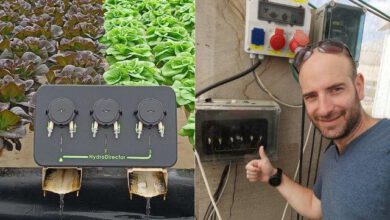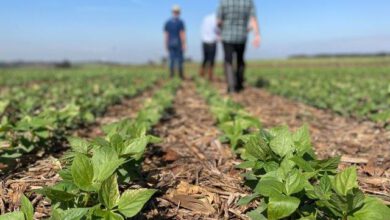Optical Sensing and Biosensing
Agricultural Pollutants Monitoring through Porous Silicon Optical Biosensors
Giorgi Shtenberg, Agricultural Engineering Institute, Volcani Center giorgi@agri.gov.il

Porous silicon (pSi) is an exciting nanostructured material poised to take center stage in the evolving biosensing effort for real-time detection applications. Sophisticated designs based on pSi platforms are currently utilized in environmental monitoring, veterinary and food quality control.
The broad spectrum of applications is mainly ascribed to the fine tuning of the intrinsic characteristics produced by electrochemical drilling, e.g., tunable optical and morphological properties, ease and speed of fabrication, high internal surface area and versatile surface chemistries, that render it as an ideal nanomaterial platform for label-free biosensing.Moreover, these biosensors offer several profound advantages that overpower conventional laboratory-based techniques in terms of speed, sensitivity, cost of measurement, reproducibility and portability.
The generic design of the biosensing platform can be easily adapted for monitoring a wide spectrum of analytes, by simply adjusting the bioreceptor (sensing element) and the optical nanostructure design for selective, high-throughput, real-time analysis of complex matrices.
The unique optical properties, photoluminescence (PL) and reflectance, are highly sensitive to the presence of chemical and biological species inside the pores. Thus, a capturing event of target molecule by bioreceptor-modified platform is detected by either monitoring the PL quenching spectrum, or by observing the reflectance spectra shift resulting from changes in the effective refractive index of the entire nanostructure void.
The latter biosensing technique is linearly dependent to size and mass transfer within the nanoscaffold. Concisely, the fringe pattern is shifted towards longer wavelengths upon molecules penetration into the pores, thus increasing the refractive index (Figure 1a), whereas analytes that are excluded from the nanostructure based on their physical dimensions (e.g., bacteria, fungi, etc.), tend to scatter the reflected light thus resulting in refractive index contrast variations (Figure 1b).
Numerous optical designs and sensing schemes have been used for monitoring an endless list of agriculture relevant analytes (enzymes, pesticides, organic substances, bacteria, toxins, etc.). Some examples include: Massad-Ivanir et al. have established a selective optical detection of Escherichia coli K12, via their “direct-cell-capture” onto immune-modified nanostructure.1 The observation of cells’ attachment is monitored by intensity changes with no prior sample processing, at low bacterial concentrations (~100 cells mL-1) within 15 minutes.
Shtenberg et al. have showed a sensitive detection of heavy metal ions (silver, lead and copper), by monitoring enzymatic reaction products at environmentally relevant concentrations, presenting a limit of detection (LOD) of 56 parts per billion (ppb), using a simple and portable experimental setup (single layer, Figure 2a) in real water samples (e.g. surface and ground water) with results equivalent to gold standard analytical technique. 2 Kilian et al. have shown a proof-of-concept of nanostructured photonic crystal (i.e., rugate filter, a multilayered scaffold, igure 2c) decorated with hybrid lipid bilayer membranes containing the ganglioside GM1 as the recognition species, which presented capturing affinity towards cholera toxin (LOD of 3 nM). 3
Starodub et al. have developed a PL immunosensor for rapid detection of T-2 trichothecene mycotoxin, a Fusarium fungi byproduct (LOD of 10 ng mL-1). 4
Shang et al. have functionalized pSi rugate filters with thin chitosan film and applied bromothylmol blue (pH indicator) for ammonia-sensing. 5 Monitoring the reflectivity spectrum allowed for direct, real-time observation in the concentration of ammonia gas in air (LODof 0.5 ppm within a few minutes).
De Stefano et al. have presented microcavity nanostructure (Figure 2d) for sensitive detection of atrazine (LOD of 1 ppm), an anthropogenic herbicide with serious physiological implications. 6 The same group has shown the detection of trace amounts of wheat gliadin in several foods with high relevance to celiac patients. Glutamine-binding protein from Escherichia coli served as a molecular probe for sensitive determination of the toxic peptide (2-40 ppb). 7
The current overview shows ample opportunities for utilizing pSi-based biosensors for label-free detection of “real-world” agricultural samples.
.jpg)
Figure 1 . A schematic illustration of a reflectivity PSi-based biosensor and the sensing concept. The pSi nanostructure is illuminated with white light perpendicular to sample surface, while the reflected light is captured and detected by a spectrometer. The obtained reflectance spectrum is fast Fourier transformed (FFT) into an effective optical thickness. The biorecognition event, between the bioreceptor and its analyte, manifest changes in the reflectivity spectra based on the analyte’s size. (a) Moderate and small sized molecules are captured within the pores (increasing effective optical thickness), while (b) microorganisms and whole cells are excluded (decreasing the reflected light intensity).
.jpg)
Figure 2 . A schematic illustration and high-resolution scanning electron microscopy micrographs of different pSi structures: (a) single layer (b) double layer, (c) rugate filter 8 and (d) microcavity. 9
References
1. Massad-Ivanir, N.; Shtenberg, G.; Tzur, A.; Krepker, M. A.; Segal, E. Anal. Chem. 2011, 83, (9), 3282-3289.
2. Shtenberg, G.; Massad-Ivanir, N.; Segal, E. Analyst 2015, 140, (13), 4507-4514.
3. Kilian, K. A.; Böcking, T.; Gaus, K.; King-Lacroix, J.; Gal, M.; Gooding, J. J. Chem. Commun. 2007, (19), 1936-1938.
4. Starodub, N.; Shulyak, L.; Shmyryeva, O.; Pylipenko, I.; Pylipenko, L.; Mel’nichenko, M., Nanostructured silicon and its application as the transducer in immune biosensors. In Biodefence, Springer: 2011; pp 87-98.
5. Shang, Y.; Wang, X.; Xu, E.; Tong, C.; Wu, J. Anal. Chim. Acta 2011, 685, (1), 58-64.
6. De Stefano, L.; Moretti, L.; Rendina, I.; Rotiroti, L. Sens. Actuators, B 2005, 111, 522-525.
7. De Stefano, L.; Rossi, M.; Staiano, M.; Mamone, G.; Parracino, A.; Rotiroti, L.; Rendina, I.; Rossi, M.; D’Auria, S. J. Proteome Res. 2006, 5, (5), 1241-1245.
8. De la Mora, M.; Lugo, J.; Faubert, J.; Ocampo, M.; Doti, R., Porous Silicon Biosensors. INTECH Open Access Publisher: 2013.
9. Pham, V. H.; Van Nguyen, T.; Bui, H. Adv. Nat. Sci.: Nanosci. Nanotechnol. 2014, 5, (4), 045003-04512.




